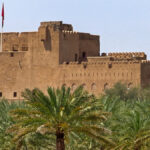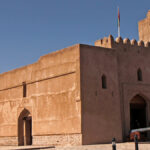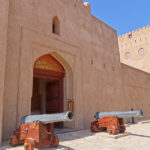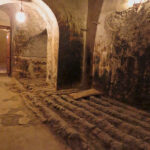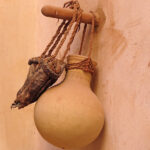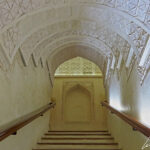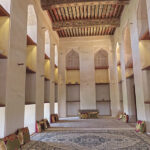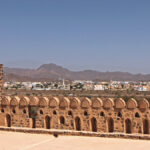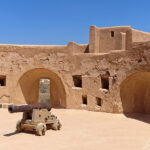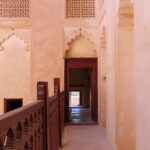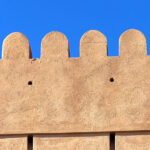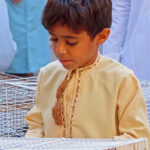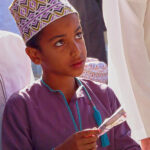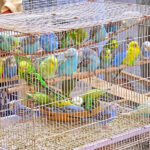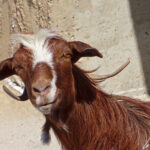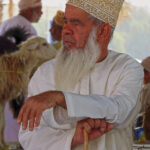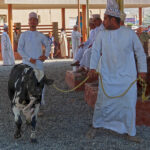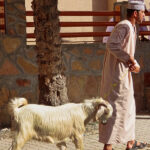Some 500 forts dot the mountains of the Sultanate of Oman. No matter where you go, you will run into a fort or a castles. There are so many you can’t visit them all! Those inland were influenced by Persian architecture, those on the coast by Portuguese. They dominate the landscape and protect the coastline of Oman. These stone sentinels follow the country’s perimeter to create an efficient defense system. The fortified castles of Nizwa, Jabrin, Al Hazm, Bahla, Rustaq and Nakhl (the largest in the sultanate) are the best known. There are many standard features in each: wells, which are vital in the event of a siege, beautiful private apartments for the Wali (chief), murder holes above the gates used to pour boiling liquids on the attackers… The terms « fort » and « castle » are often used interchangeably, but they have different meanings: a fort (qa’lah) is a military garrison post, while a castle (hisn) is a fortified building or a group of buildings used for administrative or residential purposes. Having said that, I am taking you on an exciting journey through the cultural and historical heritage of the Sultanate of Oman by visiting some of its famous castles.
Step back in time by exploring Jabrin Castle
About 100 miles from Muscat, Jabrin, also known as Jabreen castle (جبرين) is located in an oasis in the Ad-Dakhiiyah region in northern Oman near Nizwa. It’s an imposing rectangular building with ochre walls. This sandy-colored building stands out against the horizon amidst palm trees. It is excellent example of Islamic architecture, and consists of two parts. The first part rises on two levels to a total height of 53 feet. The second part has three levels with an overall height of 72 feet. Jabreen Castle was built in the late 17thcentury by the Iman Bil’arab bin Sultan Al Ya’rubi who ruled the country from 1679 to 1692. He found eternal rest inside the castle. Muhammad bin Nasr Al-Ghafiri later modified this fortified palace in the 18th century. More recently in the 1980s (1979-1983), the castle was fully restored by the Omani Ministry of Culture and Heritage. In its heyday in the 18th century, more than 300 people went about their business within these walls, including members of the Imam’s family and his small staff… They lived the castle life in the true sense of the word !
« A great feast in the castle long ago / The beautiful, the noble , the noble blood / From the whole kingdom they came dancing / Turn lives, oh turn lives, oh turn lives, oh turn lives, oh turn lives, oh turn violins ».
(Tournent les violons -Jean Jacques Goldman)

Entering the main gate of Jabreen Castle, bravely guarded by two cannons, we start a journey through time. First comes the interior courtyard, extended by a hall. As we look up, we discover openings on each side of the ceiling, allowing guards to watch the building entrance. And if an intruder tried to enter the hall without invitation, he was « welcomed » with hot liquids such as date syrup or projectiles (stones, for example) poured or thrown through these murder holes (the equivalent of the machicolation in our castles). They had a great sense of welcoming unwanted visitors at the time, didn’t they ?
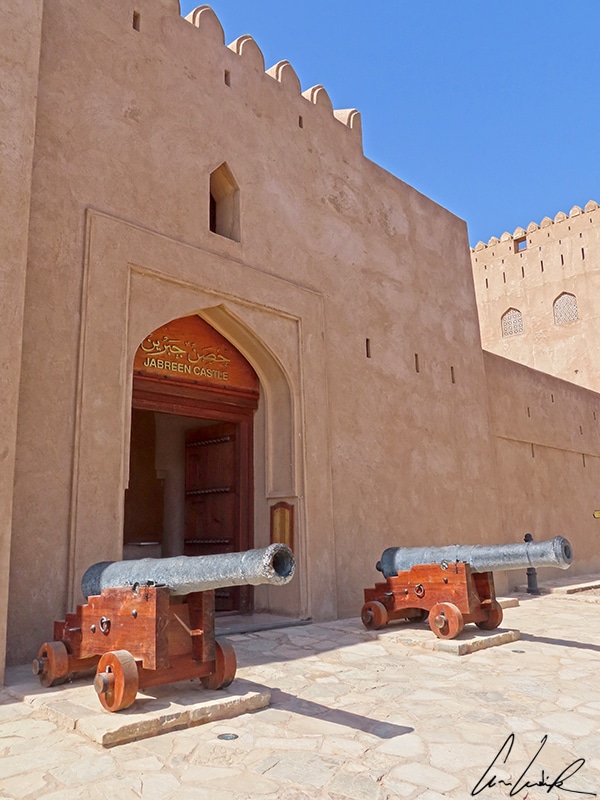
We passed that first door without being covered in hot date syrup ! There is no shortage of dates in the region, as evidenced by this date storeroom. The date storeroom is a vaulted room on the ground floor where many tons of dates were stockpiled in anticipation of a long siege. They were stored in braided palm bags and placed on a grooved floor. As weights crushed the dates, a thick honey-like syrup would seep out, run slowly along the channels in the floor, and be collected in earthenware jars. In times of peace, date syrup was used in the castle’s kitchen or for therapeutic purposes. Dates were considered a beneficial food for pregnant women and young mothers. Only in the event of an attack was the syrup heated to boiling and poured over approaching enemies.
« What do you think is the single most important element of a fortress, Poulsen ? Its walls ? Its guns ? Its position ? No. It is the men who stand behind its walls and say to the enemy, « No, you shall not take this place ».
(Storm of Iron – Graham McNeill)
As we leave the date storeroom and continue our treasure hunt in the kitchens, our gaze is drawn to the jars of water hanging on the wall right in the middle of the chests where the supplies were kept. But what ingenuity: they had already invented the isothermal gourd at that time! Indeed, drinking water was stored in a particular type of hanging jar called « Jahlah ». The « Jahlah » was left unglazed to allow moisture to seep very slowly through the outer surface of the jar. As a result, when the cool breeze from the yard blew over the jar’s surface, this moisture evaporated and cooled the water inside to a comfortable drinking temperature. In the same area, the use of the « falaj », which runs through the castle but does not fulfill its traditional role as an irrigation system, is also to be commended. In addition to providing water for daily use, it served as an air-conditioning unit !

Jabrin Castle is a veritable labyrinth. The main staircase leads you to a maze of rooms, from the kitchens to the reception rooms and the library. As you naively climb the first steps, nose up, admiring the warheads and Islamic inscriptions carved into the walls, will you sense the danger that threatens you ? The force is with you, young Nabāb ! The staircase leads directly to the family apartments, but has defensive elements for unwelcome intruders. The fourth step consists of a removable plank that, when removed, guarantees an almost deadly fall. Once you reach the second floor safe and sound, you discover beautifully decorated rooms and the library. The rooms have preserved magnificent painted ceilings and beautiful moucharabieh windows overlooking the palm grove. Among the 55 rooms in Jabrin Castle, the Sun and Moon Hall is the most splendid. The Sun and Moon Hall was the Iman’s meeting room, where he received distinguished guests. The hall has a ceiling decorated with elegant Islamic motifs and inscriptions depicting God’s eye. This hall has fourteen windows ingeniously arranged: seven at the top and seven at the bottom, the design following the principle of wind towers. This arrangement keeps the air in the room cool all year round: warm air in the room rises drawing cooler in through the lower windows which then pushes the hot air out through the upper windows – a natural air conditioning system.
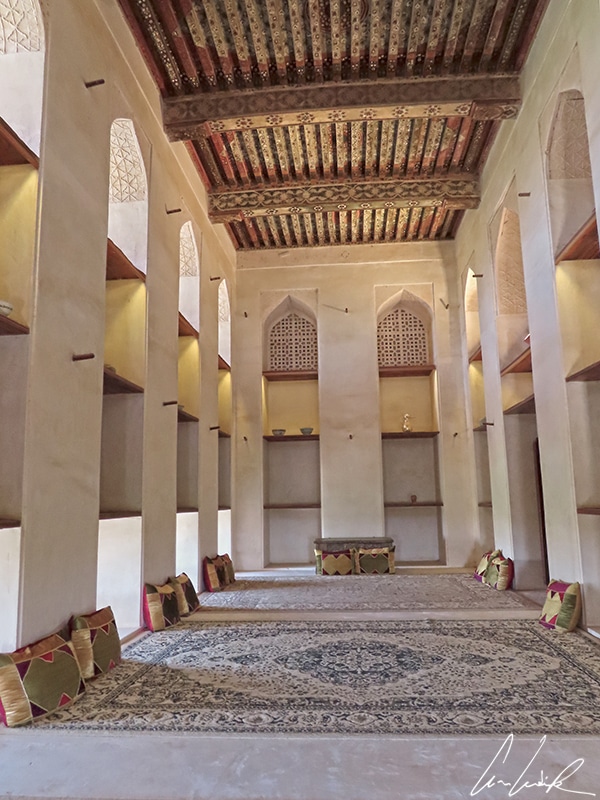
More stairs lead to the rooftops which offer a breathtaking view of the entire region. Beyond the crenelated walls extends a palm grove with the Hajar mountain range in the background. The terrace on this third floor has several levels, which can be reached by stairs. Everything is all nooks and crannies: a nook for the cannons, a prayer room, a study and so forth. Jabrin Castle was an important center for astrology, medicine, and Islamic law. At the far end of the study, we discover another staircase leading to the second floor … And the treasure hunt continues !

This part of the castle is built around a patio overlooking the kitchens. The conference room has a hidden double wall in each corner of the room. Spies could sneak behind to listen to the conversations and then report what was said. Another curiosity is the courtroom. The prisoners entered through a big door. If the accused was found guilty, he would come out on the other side of the patio, bending over as a sign of repentance to get through a 40-centimeter high door… Finally, the last peculiarity of the castle: the horse room. The proximity of the Iman’s apartments to the stable of his thoroughbred Arabian horses was a guarantee of security: a trap door, a ramp, and the trick was done–the Imam could run away at triple gallop in case of attack !
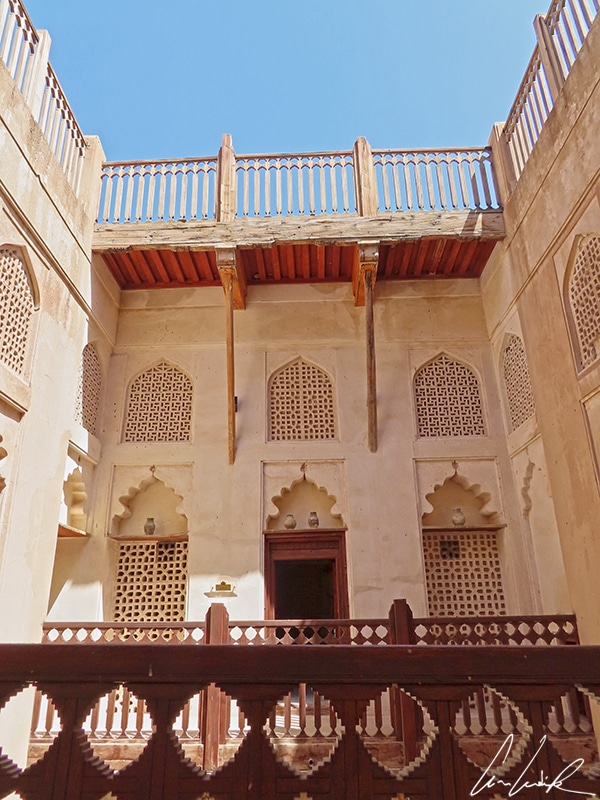
A Tour and detour in the pearl of islam: Nizwa and its fortified interior
Nizwa, a former capital of the Sultanate of Oman in the 6th and 7th centuries A.D. and a stronghold of the country’s powerful Imams, is renowned for its 17th-century castle. In the 1990s, the Nizwa fort was expertly renovated using traditional materials, and now it looks almost new. Nicknamed « the pearl of Islam », Nizwa is located on a plain surrounded by lush palm groves and mountains some 87 miles and about a two-hour drive from the capital Muscat. The city has attracted but also produced the country’s greatest scholars, poets, and religious leaders. The Omani historical records state that the tower of Nizwa was built by Iman Bin Said Al Ya’rubi in the 17thcentury (1649-1661). However, it is possible that the original fortifications of the citadel, which includes both a castle and a fort, may be much older. The city of Nizwa was one of the first cities in the Sultanate of Oman to convert to Islam. The two historical mosques of Nizwa, the « Shawadhna » and the « Sa’al », date from the earliest days of Islam and are believed to have been built in 623 and 629 A.D., respectively. The original fortification may be as old as or even older than these two mosques. Other historians believe that the ancient structure of the present fortification dates back to the reign of Iman Al-Salt bin Malik during the 9th century. Nevertheless, this battle of dates does no damage to the beauty of the current fort.

Strategically located along a vital commercial route, Nizwa Fort watched over the trade routes that pass through Sama’il to the west, Wadi Tanuf to the east, and the desert regions to the south. The towering Hajar Mountains naturally protected the northern routes. Unique in its size, the majestic drum-like tower (« Burj ») rises about 98 feet above the ground and has a diameter of 118 feet. The platform at the top of the tower has openings all around, from which 23 cannons once could fire in a 360-degree radius. On the platform itself, the surrounding wall rises another 32 feet or so to provide a patrol path to watch over the surrounding countryside. The path is sheltered from the tower’s crenellations. The fort was built above a subterranean « falaj » Daris that fed several wells inside the fort to ensure a water supply to its inhabitants in case of contamination of the running water. An ingenious pulley system held by wooden elements is set in motion by an ox or a donkey. This allows the water to be drawn off and then returned to the irrigation system.
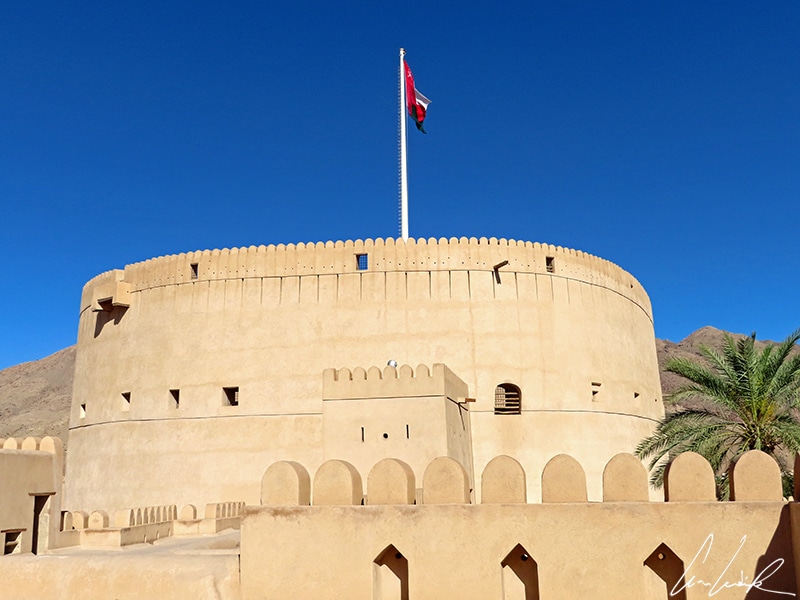
At the forefront of military design at the time, the Nizwa fort was full of ingenious traps designed to repel reckless assailants. The walls of this gigantic sandcastle are punctured with murder holes. The central murder hole was intended for long-range firing while the side murder holes were used for medium-range firing. Finally, the narrow openings scattered around the tower allowed the shooter to reach enemies who came too close to the fort. Other surprises awaited if the attackers managed to get through between shots, including a « welcome » at the main entrance. As in the Jabrin castle, the welcome consisted of pouring hot liquids such as date syrup or throwing stones onto the arrivals. If by chance, you came out unscathed from this warm welcome (perhaps you should buy a lottery ticket ?), you were not yet at the end of your troubles ! Some of the stairs were fitted with removable wooden planks giving way to bottomless pits, which would surely end the life of anyone unlucky enough to fall through ! Such traps were found in front of each of the seven sturdy doors of the zigzag staircase leading to the citadel. But beware, there is a second trap! If you manage to get through the door, just behind it is a second trap that opens under your weight. And there it is, the fall… of my tale. As the Quebec poet Claude Péloquin said,
« You fell sick; you fell in love, you fell down the stairs; falling is the problem ! »
Going to market in Nizwa: a wholesale and livestock market !
They get up early. At dawn or even before, if they come from as far away as the Ad-Dakhiliyah region and beyond. Today, you’ll get up early like the Omanis because, on Fridays between 7 and 9 a.m., the Nizwa cattle market is bustling with activity. Men in « dishdasha »(long tunics) wearing the traditional « kumma » (round hat) or « mussar » (local colorful and knotted turban) wander past the cages and stalls. Their young sons habitually accompany them, and they don’t hesitate to pull out a few rials to buy a small animal: turkeys, chickens and chicks, budgerigars make up most of this part of the market. There are rabbits and even more surprising, long-haired white cats… Very lively and colorful, and the chattering noise is almost constant…
« In the mahogany henhouses / The beautiful jeweled farmyards / You can hear the conversation / Of chickens that have an opinion »
(Poulailler’s song – Alain Souchon)
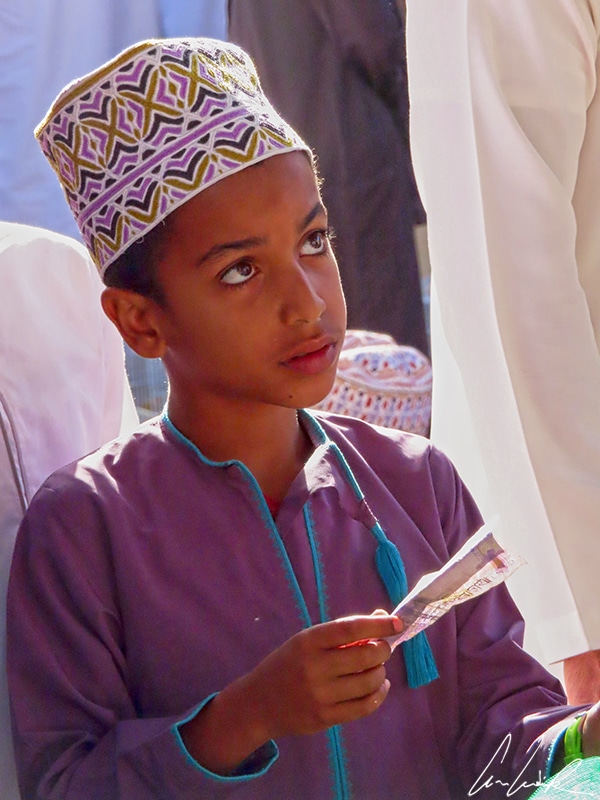
However, it is a little further on that the buzz in the atmosphere becomes palpable. It’s around a kiosk where goats and cattle are sold in a cacophony of bleating, mooing, and loudly shouted bids. In the center of the square, in front of a stall, sit potential buyers who watch as sellers lead their cattle around a circle, waiting to be accosted. The strongest farmers even manage to carry a goat on their shoulders, while pulling one or two others at arm’s length. The interested buyer asks for the price of the animal as the seller passes by, but sometimes waits several turns before starting a negotiation. The haggling includes questions about the good health and vitality of the animal. The hand of the potential buyer feels the goat’s stomach to see if it has been well-fed and checks the condition of its teeth and paws. If satisfied, a sum of money will be offered leading to loud negotiation between parties.

In this constant buzz of haggling and in the midst of the dust raised by the hooves of the animals, we immerse ourselves in a spectacle of life that seems to be from another era. It is a real cultural immersion into Omani life but also the opportunity to capture faces or attitudes that we will take home as snapshots of another time…
Find more on the Sultanate of Oman
- Muscat, capital of the Sultanate of Oman: A city walk in the anti-Dubai!
- The East Coast of the Sultanate of Oman: A Walk along the Coastline
- The Natural Wonders of Oman: Green Wādī and Moving Sand
- Escapes in the Hajar Mountain Range
